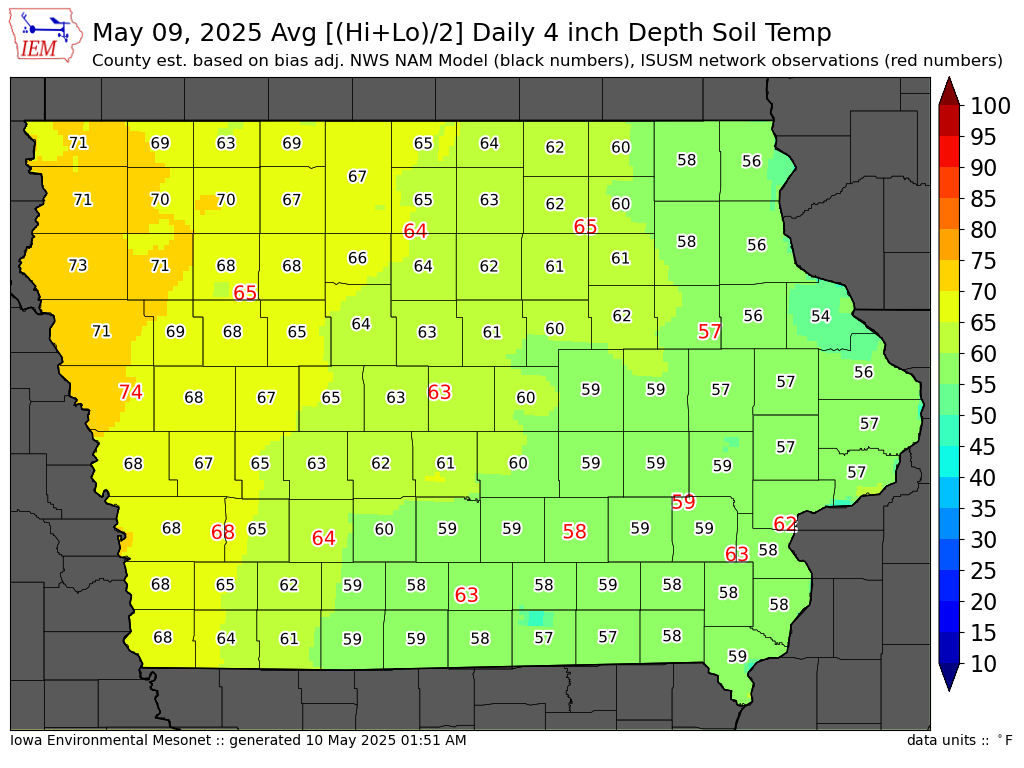April 10, 2013
What a nice change in the forecast we have had
this past week. Warmer weather last week has helped lift the frost and started
greening up the grass. The rain this week is exactly what the doctor ordered.
The gravel roads and fields have seemed to soak up the moisture we have
received. Although this rain has fallen in substantial amounts we still aren’t
out of the drought picture. The photo below is the drought monitor comparison
to last year at this time. As you see the eastern Corn Belt looks to be back to
normal but the western half is still in a moderate to exceptional drought.
 |
| Early April Drought Comparison 2012 vs. 2013 |
With
the cooler spring weather questions have come up about the germation tests used
by seed companies. There are two different tests companies use to rate the germ
on their seed, a cold germ test and a warm germ test.
The cold germination test gives us a
reasonable idea of emergence under less than ideal conditions. The seed is
chilled 50°F for seven days without light and then moved to a 77°F for five
additional days. The seeds are then evaluated to decide what the germ on the
crop is. The cold germ test typically takes 12-14 days.
The warm germination tests are to give us a
reasonable idea of field emergence under favorable conditions. This test is
normally conducted at 77°F for 7 days. The sample seed is then evaluated and a
warm germ score is determined. Warm germ tests are typically 7-10 days long.
The
past week we have also been busy treating soybeans. There have been many
different benefits discovered when using a seed treatment at planting. A few
benefits include better emergence, additional defense against early season
disease and prevention of early season feeding from the bean leaf beetle.
Along
with seed treatment we have been adding inoculant to some of the beans being
treated. Inoculants have been around for a while and have been proven to aid
the soybean in cool spring soils along with fields following a drought like
last year.
As the soybean plant starts growing roots it
sends a chemical signal to the rhizobia in the soil. Once this process is done
the plant then prepares itself for the infection of rhizobia. The rhizobia then
starts to create the nodules on the root mass. These nodules are used to start
the nitrogen fixation and create important protein for the plant. The more
healthy nodules a plant has the more efficient this process is and the greater
your yields will be.
The
problem with cold soils is they
delay the whole chemical process and the soybean takes longer to start its
nitrogen fixation process. The seed inoculant we are applying to the beans helps
kick start this process so there won’t be a delay in the nitrogen fixation.
The
problem with soils following a drought
year is the impact the drought has on soil microbial populations. The soybean
plant needs these soil microbial popultions in order to provide plant nutrients
and create the proper growing environment for the rhizobia. In return the
rhizobia will turn atmospheric nitrogen into ammonia which is then used by the
soybean plant. For all this to happen nitrogen-fixing bacteria must be present
in the soil in relatively high numbers at planting. A drought will kill the
bacteria needed in the soil and it will not be available to the plant at
planting time. The innoculant we are using on our treated soybean contains the
extra bacteria needed at planting that may have been killed off during the drought.
Thanks
for stopping by and be sure to check in next week for more information as we
creep up on the spring season.
Citation:
(“The Soy Report” http://thesoyreport.blogspot.com/2012/12/drought-impact-on-soil-rhizobia.html)
(“Soybean Inoculation; its
Science, Use and Performance” http://agcrops.osu.edu/specialists/soybean/specialist-announcements/SoybeanInoculation.pdf/view)
















